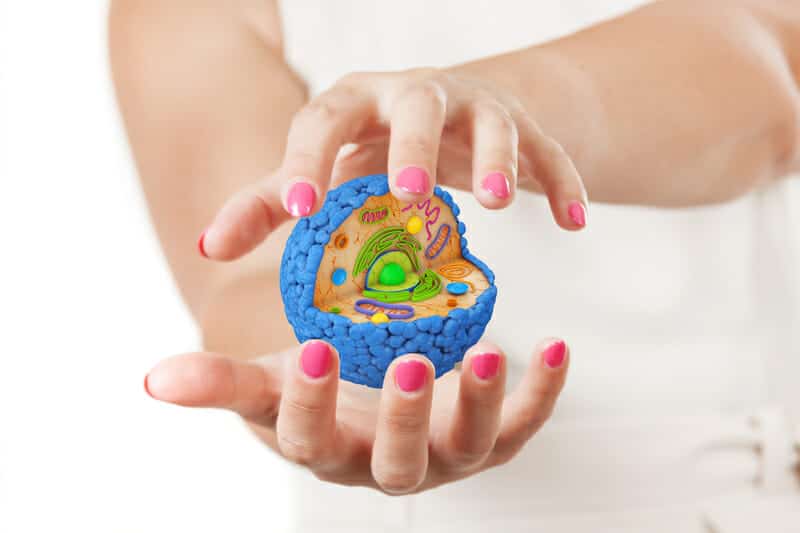Everybody knows the mitochondria is the “powerhouse of the cell” – the one thing we all remembered from high school biology.
Yet the mitochondria is responsible for so much more, with its dysregulation being well-connected to “cancer, neurodegenerative and cardiovascular disorders, diabetes, traumatic brain injury, and inflammation” (Source)
It even goes as far as to produce peptides that regulate body and help it maintain optimal function.
One such peptides is Humanin, which we are now discovering plays many roles simultaneously in preventing disease and restoring our biological systems to run optimally.
But how exactly does this happen?
And can we use Humanin as a form of therapeutic treatment in disease states?
Keep reading to find out!
Table of Contents
ToggleWhat is Humanin Peptide?
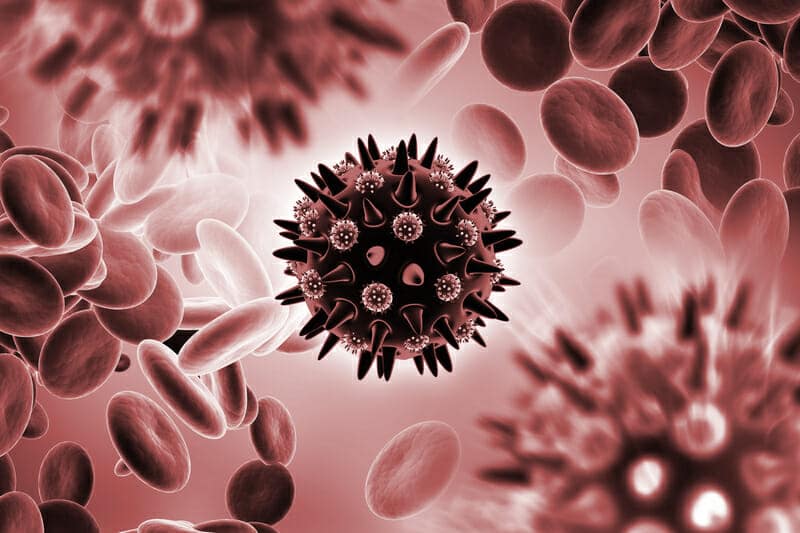
Humanin is a naturally-produced peptide spanning a total of 24 amino acids and is derived directly from the mitochondria in your cell.
Humanin is believed to be located in multiple parts of the human body, including the “heart, vascular walls, kidney, brain, and skeletal muscles” (Source).
As a matter of fact, it was the very FIRST mitochondrial-derived peptide to be characterized and isolated back in 2001:
“Humanin is a sORF [small open reading frame] found in the mitochondrial genome about 10 years ago [in the undamaged occipital cortex of a patient with Alzheimer’s disease] (Source)
The Nishimoto group identified the humanin cDNA sequence from a functional expression screen.
Clones that protected cells from cell death induced by a mutant form of amyloid precursor protein (APP), a possible cause of Alzheimer’s disease, were compared and they all shared a 75 bp sORF [small open reading frame].
This sORF is identical to a region of the mitochondrial 16S rRNA and encodes a 24-amino acid peptide, which was called “humanin” in hopes that it would restore the humanity back to patients with Alzheimer’s disease”
(NOTE: Two other research groups discovered Humanin through other means, but Nishimoto’s group was the first to publish their results)
To be more specific:
“HN [humanin] is encoded by the 75 bp ORF sequence within the 16S rRNA gene of mtDNA [mitochondrial DNA]. In response to cellular stress, HN is secreted as a peptide made of 24 or 21 amino acids, depending on the cytoplasmic or mitochondrial translation site, respectively”
In summation, here is what Humanin does:
“HN exhibits protective effects in several cell types, including leukocytes, germ cells, neurons, tissues against cellular stress conditions and apoptosis through regulating various signaling mechanisms, such as JAK/STAT pathway and interaction of BCL-2 family of protein. HN is an essential cytoprotective peptide in the human body that regulates mitochondrial functions under stress conditions.”
While initially thought to be a mitochondrial peptide, it was later classified as a neuropeptide due to its protective effects in patients with Alzheimer’s disease (more on that later).
You might be thinking Humanin is highly similar to MOTS-C, another mitochondrial peptide I have previously written about.
However, there are some small differences between Humanin and MOTS-C you should know about
“…they are hitting both aspects of mitochondrial biogenesis and the ability to up-regulate the mitigation of the free radical production. So, they work in combination with each other.
…I know that the mitochondrial biogenesis definitely occurs with the MOTS-c, but I think it’s more focused on really the mitochondrial biogenesis. Whereas the humanin is more along the lines of the Nrf2 pathways and the keep(?) genes.
So, I think the humanin is the one that we know for sure is associated with longevity based on genetic studies. MOTS-c is fairly new from genetic studies, but we don’t have anything that tells us anything about variants of it”
Let’s dive deeper and truly understand the inner workings of Humanin…
How Does Humanin Work?
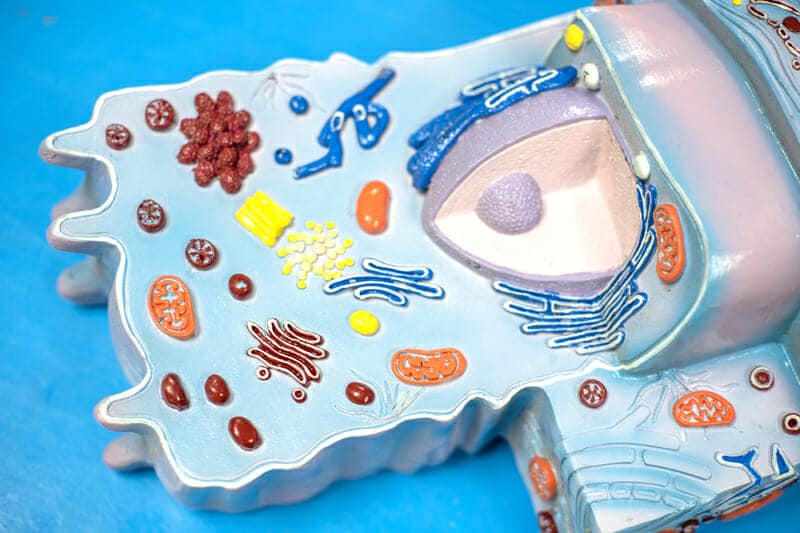
Humanin’s mechanism of action is very complex and involves multiple pathways, but here’s one major part of it:
“Clearly, part of the effect of humanin involves a systemic metabolic normalization of stress-response homeostasis.
An additional mechanism of humanin action involves reduction of inflammation, and humanin signals through at least two receptors, one of which is the immunity-modulating protein-coupled formylpeptide receptor-like-1.”
Humanin also acts against the cellular process of apoptosis (cell death) by targeting a protein called Bax:
“Bax (Bcl2-associated X protein) is an apoptosis-inducing protein that participates in cell death during normal development and in various diseases1 . Bax resides in an inactive state in the cytosol of many cells.
In response to death stimuli, Bax protein undergoes conformational changes that expose membrane-targeting domains, resulting in its translocation to mitochondrial membranes, where Bax inserts and causes release of cytochrome c and other apoptogenic proteins
…. HN [humanin] prevents the translocation of Bax from cytosol to mitochondria. Conversely, reducing HN expression by small interfering RNAs sensitizes cells to Bax and increases Bax translocation to membranes
We speculate therefore that HN arose from mitochondria and transferred to the nuclear genome, providing a mechanism for protecting these organelles from Bax”
Several other biomolecules are also targeted by Humanin (HN):
“A potential mechanism of action for HN involves binding to a receptor and initiating a cascade of intracellular signaling to provide cytoprotection.
HN was shown to protect neurons from amyloid β by binding to a cytokine-receptor complex composed of glycoprotein 130, ciliary neurotrophic factor receptor α, and IL-27 receptor (WSX-1), and subsequently activating the Janus family of tyrosine kinases 2/signal transducer and activator of transcription 3 pathway.
HN also binds with high affinity to IGFBP-3″
And although it’s not certain, inhibiting IGFBP-3 may lead to lowered insulin resistance (other research suggests
Many more mechanisms are also plausible, as evidenced by several other research studies (here and here).
But here are two more worth noting:
“…humanin can elevate cellular ATP levels even when there is no apparent lack in ATP”
“Humanin acts against different cell death mechanisms (i.e., apoptosis, necroptosis and necrosis)”
So how does all of this translate to the human body?
Humanin Peptide Benefits
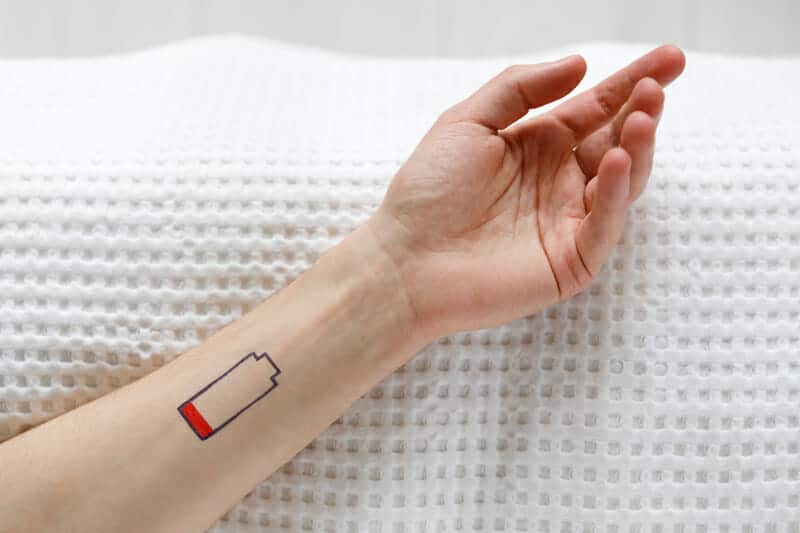
As of this writing, 353 studies on Humanin have been published between 2001 and mid-2021.
While the overwhelming majority have been conducted in cell cultures and animals, there is a lot that can be extrapolated towards benefits in humans.
Restores Mitochondrial Health and Function
Since Humanin is directly derived from the mitochondria, it only makes logical sense for the peptide to directly benefit this cellular complex.
Indeed, there are several mechanisms through which this happens:
- Lowers mitochondrial oxidative stress by reducing the production of reactive oxygen species
- Targets respiratory chain malfunction within the mitochondria
- Inhibits the pathway leading to mitochondrial apoptosis (i.e. death)
- Enhances mitochondrial metabolism
- Induces mitochondrial biogenesis (i.e. growth and division of existing mitochondria to produce new ones), which translates to more ATP production (i.e. cellular energy)
I want to touch on the last point briefly, as there IS a way to naturally upregulate your body’s humanin production – Exercise!
Multiple studies (here and here) confirm elevated production of humanin with intense vigorous physical exercise, which naturally leads to the following outcomes:
“better tolerance to glucose in this group…indicating an endocrine Humanin effect… Humanin and its analogues have a therapeutic potential to better insulin action.”
“cellular cyto- and metabolo-protective roles that parallel those of exercise”
Obviously, failing to exercise and boost your mitochondrial health can have severe consequences:
“…studies in human muscle samples showed that older subjects have a drop in total mitochondrial mass.
These changes in quantity and molecular mitochondrial products can increase the sarcopenia case, with the root of other functional loses, such as mobility, independence, breathing, metabolic, etc., being physical activity as one important non-pharmacological tool to delay such events”
If you need yet another reason to get active, now you have one.
Helps Prevent Side Effects of Chemotherapy Treatments
As you’ll see later, Humanin’s role in tumor development and cancer progression is not fully understood.
Yet there seems to be a consistent finding in which Humanin counteracts the toxic side effects induced by conventional chemotherapy treatment.
For example, Humanin may help silver nanoparticles (AgNPs), a common delivery system for anticancer agents, exert their effects without compromisng optimal cellular function:
“AgNPs caused a dose-dependent decrease of cell viability and proliferation, induced loss of plasma-membrane integrity, oxidative stress, loss of mitochondrial membrane potential (MMP), and loss of ATP content, amongst other effects.
Pretreatment or co-treatment of HN with AgNPs protected cells from several of these AgNPs induced adverse effects.
Thus, this study demonstrated for the first time that HN protected neuroblastoma cells against AgNPs-induced neurotoxicity.”
Suboptimal fertility is also observed in long-term male cancer patients undergoing treatment, and humanin analogues can stop the death of germ cells (here and here) in mice when used alongside treatments such as Temozolomide, Cyclophosphamide & Doxorubicin.
Other chemo-related side effects Humanin can reduce or prevent include “testicular infertility, as well as “chemo-brain”, neuropathy, endocrinopathies, and cardiomyopathy” (Source).
Extends Overall Lifespan
Believe it or not, your humanin levels can say an awful lot about how long you live:
“In multiple species, humanin levels generally decline with age, but here we show that levels are surprisingly stable in the naked mole-rat, a model of negligible senescence.
Furthermore, in children of centenarians, who are more likely to become centenarians themselves, circulating humanin levels are much greater than age-matched control subjects.
Further linking humanin to healthspan, we observe that humanin levels are decreased in human diseases such as Alzheimer’s disease and MELAS (Mitochondrial Encephalopathy, Lactic Acidosis, and Stroke-like episodes)”
The study quoted above then goes on to explain how this ties back to mitochondrial dysfunction:
“[Mitochondriall dysfunction is central to the observed physiological declines that occur during the aging process.
Similarly, mitochondrial dysfunction is found in many age-related diseases, although whether this is causal or simply correlative has yet to be established.
Furthermore, in addition to their role in energy utilization and cell survival, alterations in mitochondrial genes can increase lifespan in several model organisms and mitohormesis has been implicated in lifespan”
The author then concluded the importance of examining Humanin for use in humans:
“This study, as well as many others, suggest that humanin administration would be an effective therapeutic treatment for a large number of diseases and further solidifies the importance of the mitochondria beyond its traditional role as the ‘powerhouse of the cell,’”
Higher humanin expression = slower aging?
Perhaps, considering Humanin levels decrease with age!
This study was published in June 2020 yet it is already regarded as a landmark study for understanding how the process of aging works.
Other notable conclusions include:
“The first research to show humanin sufficiency is capable of extending lifespan.
The insulin/Insulin-like growth factor–1 (IGF–1) is the pathway for humulin interaction to increase the lifespan.
Mitochondrial signaling and MDPs (Mitochondrial Derived Peptides) have a significant role in aging and age-related diseases.”
More information on how IGF-1 and humanin interact with each other can be found here:
“Long-lived, GH-deficient Ames mice displayed elevated humanin levels, while short-lived GH-transgenic mice have reduced humanin levels. Furthermore, treatment with GH or IGF-I reduced circulating humanin levels in both mice and human subjects.
Our results indicate that GH and IGF are potent regulators of humanin levels and that humanin levels correlate with lifespan in mice. This suggests that humanin represents a circulating mitochondrial signal that participates in modulating the aging process, adding a coordinated mitochondrial element to the endocrine regulation of aging.”
Not a bad discovery at all!
Shows Great Promise for Treating Alzheimer’s Disease
3 years after the discovery of Humanin, there was a solid understanding of how the peptide targets the negative outcomes of Alzheimer’s disease:
“HN [humanin] suppresses neuronal cell death caused by Alzheimer’s disease (AD)-specific insults, including both amyloid-β (βAβ) peptides and familial AD-causative genes.
Cerebrovascular smooth muscle cells are also protected from Aβ toxicity by HN, suggesting that HN affects both neuronal and non-neuronal cells when they are exposed to AD-related cytotoxicity.
HN peptide exerts a neuroprotective effect through the cell surface via putative receptor(s)”
Specifically, the key is to target the death of neuronal cells:
“…neuronal loss caused by cell death accounts for most—if not all—clinical manifestations of AD. Therefore, prevention of neuronal death should be an important target in developing therapeutics. If the agent that directly inhibits neuronal cell death can be combined with an Aβ-based remedy, then a complete cure of AD can be expected.”
But it’s not just Alzheimer’s disease; in a pivotal 2018 study involving both mice and humans, lowered Humanin production is strongly associated with accelerated cognitive aging and increased risk of neurodegenerative diseases such as dementia:
“…humanin administration has neuroprotective effects in vitro in human cell culture models and is sufficient to improve cognition in vivo in aged mice.
Furthermore, in a human cohort, using mitochondrial GWAS, we identified a specific SNP [single-nucleotide polymorphism] (rs2854128) in the humanin-coding region of the mitochondrial genome that is associated with a decrease in circulating humanin levels.
In a large, independent cohort, consisting of a nationally-representative sample of older adults [~12,500 people], we find that this SNP is associated with accelerated cognitive aging, supporting the concept that humanin is an important factor in cognitive aging”
So on top of “rescuing human cerebrovascular smooth muscle cells from Aβ-induced toxicity” (Source), Humanin also “prevents synapse loss in hippocampal neurons” (Source)
There are many more mechanisms at play, but it can’t be denied that Humanin ought to be the pharmaceutical drug target of the current decade.
May Be Beneficial for Heart Health
As early as your birth, your humanin production – and consequently your mitochondria’s ability to self-regulate itself – plays a notable role in your cardiovascular health.
This was discovered in a retrospective trial involving around 110 human subjects:
“Serum humanin levels are lower in adult born PT [pre-term].
Since lower humanin levels are also associated with lower LVEF [left ventricle ejection fraction], our results suggest that mitochondrial alterations could play a role in the long-term adverse cardiovascular consequences of PT birth. Humanin analogs improve LV [left ventricle] function in experimental models.
Our results pave the way for future studies exploring humanin as a therapeutic avenue for the prevention and treatment of CVD in individuals born PT.”
Several experiments in mice and rats continue to strengthen the relationship between lowered Humanin production and increased risk of heart disease; fix the mitochondria and the heart will fix itself:
“Myocardial I/R [ischemia/reperfusion] injury was induced in rats by 30-minute left anterior descending coronary artery occlusion, followed by 120-minute of reperfusion. HNG [humanin analogue] at the different doses were given intravenously at 15 minutes after ischemic onset and also at the onset of reperfusion.
HNG (252 μg/kg) applied during the ischemic period not only increased HN [humanin] levels in the damaged myocardium, but also significantly decreased cardiac arrhythmia, myocardial infarct size, cardiac mitochondrial dysfunction, and left ventricular dysfunction. These benefits were mediated through the attenuation of cardiac mitochondrial dysfunction.
High-dose HN applied during ischemia in rats could exert cardioprotection against I/R injury-induced mitochondrial dysfunction.”
If you want to see more of these experiments, they are freely available online (here, here, and here).
And while we don’t have any human studies directly involving the USE of Humanin as a therapeutic treatment, Humanin levels in patients with coronary artery disease paint a very compelling picture:
“Endogenous Humanin exerted protective effects against atherosclerosis by attenuating ROS [reactive oxygen species] production and apoptosis.
Level of endogenous Humanin in the plasma was associated with an increase in oxidative stress and atherosclerosis in aging.
Circulating Humanin levels were associated with preserved coronary endothelial function
Endogenous Humanin levels were up regulated in plaque specimens of the patients with atherosclerosis as an endogenous response to the apoptotic process”
In fact, Humanin levels increase as a protective response against oxidative stress, which explains the results seen so far.
Thix extends far beyond Humanin, as it turns out overall mitochondrial health is heavily linked to heart health:
“Another potentially important link between mitochondrial oxidative stress and vascular aging is the induction of apoptosis. Oxidative stress in aging is associated with an increased rate of endothelial apoptosis, which may contribute to microvascular rarefaction impairing the blood supply of the heart and the brain.
Cerebrovascular endothelial cells are rich in mitochondria, and normal mitochondrial function is essential for maintaining the integrity of the blood–brain barrier.
On the basis of the available data with mitochondrial inhibitors, we posit that age-related mitochondrial dysfunction may contribute to breakdown of the blood–brain barrier, promoting neuroinflammation in aging. Mitochondrial-derived ROS may also impact endothelium-dependent vasodilation.”
Yet another reason to consider Humanin use if you are an aging man or woman concerned about longevity and overall well-being.
Could Be a Potential Treatment for Diabetes
Just like being a predictor of poor heart health, your body’s Humanin levels are similarly foretelling of your likelihood to contract Type 2 Diabetes:
“Serum HN [humanin] concentrations were lower in T2D [type 2 diabetes] (p < 0.0001) and negatively correlated with age (p < 0.0001), HbA1c (p < 0.0001), glucose (p < 0.0001), triglycerides (p < 0.003), ALT (p < 0.004), and TG/HDL ratio (p < 0.001). Circulating HN levels were positively correlated to cholesterol (p < 0.017), LDL (p < 0.001), and HDL (p < 0.001).
…The MDPs HN and MOT-c, similar to ADP, are decreased in T2D and correlate with HbA1c. The data provide an additional evidence that mitochondrial dysfunction contributes to glycemic dysregulation and metabolic defects in T2D.”
In fact, a landmark 2009 study involving Humanin injections into diabetic mice revealed the peptide’s powerful ability to stabilize blood glucose levels:
“In the study, Dr. Barzilai and his colleagues infused humanin into the brains of diabetic rats to determine the peptide’s effect on glucose metabolism.
The infused humanin significantly improved overall insulin sensitivity, both in the liver and in skeletal muscle.
Furthermore, a single treatment with a highly-potent form of humanin significantly lowered blood-sugar levels in diabetic rats.”
Two other studies in rats go one step further and suggest Humanin is also useful for maintaining metabolic homeostasis and “lower several markers associated with age-related metabolic disorders”.
And unsurprisingly, a systematic review of 45 studies from 1997 to 2014 came to the conclusion that Humanin should absolutely be further examined as a treatment route for Type 2 diabetics!
Multiple Unexplored Uses Of Humanin
Humanin may have only been in known existence for 20 years, so we’re just starting to get a glimpse of its full spectrum of biological effects.
This hasn’t stopped researchers from postulating many other potential health benefits of Humanin:
- Humanin analogue (HNG) may promote hair growth
- Lowered Humanin production was observed in patients with Q fever fatigue syndrome and chronic fatigue syndrome
- Humanin analogue (HNG) “could be a prospective treatment to alleviate the insulin resistance (IR) associated with polycystic ovary syndrome” (Source)
- A patent exists for humanin to provide “beneficial activities on cartilage tissues and/or bone tissues including the prevention of negative effects of drugs on cartilage tissues and/or bone tissues” (Source)
- Humanin may help prevent bone growth impairment
- Humanin could be useful in other disease states such as Parkinson’s and kidney disease (Source)
- Humanin may inhibit cellular senescence, although this is hotly debated (read my article on cellular senescence for more information)
- Humanin possesses anti-inflammatory properties, and this effect is believed to be specifically observed in organs such as the lungs
- Humanin, its analogues, and other mitochondrial-derived peptides, could exert protective effects against age-related macular degeneration, a major cause of blindness in older individuals (here, here, and here)
As far as I’m concerned, we’re just seeing the tip of the iceberg when it comes to understanding the health benefits of Humanin.
Humanin Dosage for Mitochondrial Health
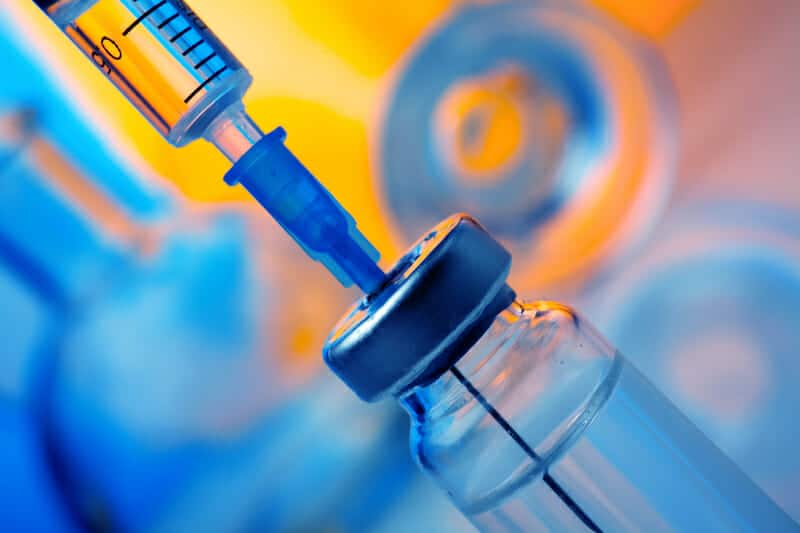
Unfortunately, nobody knows the best therapeutic Humanin dosage for maximizing safety and effectiveness in humans.
So for your convenience, I will provide you with what other biohackers have experimented with to help you make an informed decision…
KenkoHacks used 1 mg of Humanin twice a day for 15 consecutive days (due to Humanin’s short half-life of ~30 minutes) on the basis of his bodyweight (58 kg), noting animal studies used far higher dosages relative to their total weight.
He felt a “sense of calm and wellness” upon using Humanin.
One Reddit user claims 25-50 mcg of Humanin daily, although this is for the more powerful Humanin analogue HNG and not the parent molecule (i.e. Humanin itself)
Their rationale is as follows:
“This is the only therapeutic dosing protcol I know of.
According to Jean Francois Tramblay from Canlabs this tranfers to MAXIMUM human dosing !! 0.04mg per KG bodyweight /day. 252mcg/kg in Rats is 0.04mg/kg in Human”
Ben Greenfield once did an 8-week course of injections involving 100 mcg of Humanin and 25 mcg of MOTS-C, although the original post is now unavailable.
A Reddit discussion on humanin use had varying opinions:
- 5 mg of Humanin every 4-5 days
- 2 mg of Humanin every other day improved one user’s sleep quality, someone who usually wakes up 1-3 times a night.
- Humanin used every 5-7 days (an exact dosage was not provided)
Presumably, all of these Humanin protocols involve subcutaneous injections but more data is needed to determine the best method of administration (which includes time of day to take Humanin, whether to use it on an empty stomach or with a meal, etc.).
In terms of preparation and storage, these instructions were all I could find:
“Up to 6 months in lyophilized form at 0-5°C. For best results, rehydrate just before use. After rehydration, keep solution at +4°C for up to 5 days or freeze at -20°C for up to 3 months. Aliquot before freezing to avoid repeated freeze-thaw cycles.”
At this point in time, it is up to the individual to experiment with Humanin doses and the timing of said doses to determine what works best for them.
Humanin Side Effects

Safety data on Humanin is extremely limited due to the lack of studies involving the use of the peptide in humans.
However, we can potentially infer a few things.
Back when Keio University professor Ikuo Nishimoto discovered Humanin in 2001, he was cautiously optimistic about Humanin’s safety in humans:
“Nishimoto said that further testing will be needed to determine whether humanin can actually cure Alzheimer’s.
‘Whether this can be used as a cure or not will depend on the results of testing,’ he said, adding this process could take as long as 15 years.
But Nishimoto said humanin has so far met all the conditions required as the cure for the disease.
‘Humanin has so far met the various required conditions. For example, when you stop deaths of brain cells, it usually causes cancer. But humanin does not have such side effects,’ he said.”
Even small humanin-like peptides (SHLPs), which have only been examined as biomarkers in humans and tested in animals, have yet to conduct experiments involving the direct administration of Humanin to human beings.
Nevertheless, side effects are theorized to be mild in severity and frequency:
“Safety data is lacking, but the endogenous SHLPs are associated with beneficial effects. There is a greater concern toward peptide administration-related reactions than effects from the peptides themselves.
The safety data for SHLPs is limited to a handful of cell culture and short-term animal model studies.
No major safety signals have been noted, but these studies were also not designed to evaluate safety. As endogenous mitochondrial derived peptides, SHLPs are expected to be relatively safe, and the primary safety concerns stem from the projected methods of administration via injection or infusion.”
However, some evidence suggests humanin’s role in cancer progression is still highly misunderstood:
“The inhibition of endogenous HN [humanin] by intratumoral injection of baculoviral gene therapy vectors, encoding a short-hairpin RNA targeting HN, upregulated the expression of Bax, increased the tumor apoptotic rate, inhibited tumor growth, and increased the survival of prolactinoma xenograft models.
In addition, our preliminary results indicate systemic administration of HN facilitates tumor progression and chemoresistance in mouse models of breast cancer, putting into question the safety of systemic administration of HN or its analogs for cancer treatment”
This finding appears to be confirmed for specific cancers such as breast cancer and prostate cancer.
Additionally, pregnant females with high blood pressure tend to have elevated levels of humanin production.
For all of the above reasons, I need to put the following disclaimer:
I have not personally used Humanin myself, so it is 100% up to you to decide whether using Humanin is safe and effective for you, the dose of Humanin you should be using and how often to use it.
Where to Buy Humanin
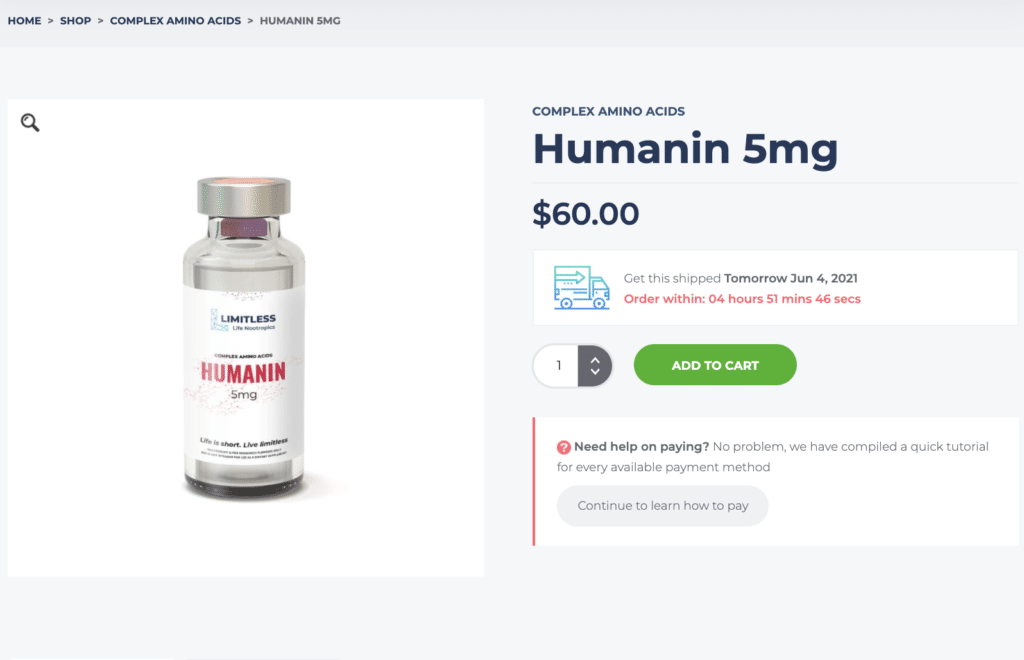
If you want to buy Humanin online, you’ll be hard-pressed to find a legitimate source.
Very few peptide experts even KNOW about its existence, and even fewer suppliers would have it in stock.
But there is some good news: Limitless Life Nootropics JUST added Humanin to its inventory and it is now available for purchase.
Use code JAY15 to get 15% off your order!
I wouldn’t trust any other manufacturer who newly launched a peptide like Humanin until the reviews came in, but this company’s quality and purity control processes are second to none.
However, do note that many researchers are working tirelessly to create Humanin analogues that are far more powerful than the original peptide:
“Each of the 24 amino acids in the Humanin peptide have a specific function. Serine at position 14 confers neuroprotection, but its substitution with glycine generates a variant called Humanin G (HNG) that is 1000-fold more potent than its parent analog Humanin“
So whatever health benefits you experience with Humanin could be greatly amplified when newer versions are released for public consumption.
Additional Reading Resources For Humanin
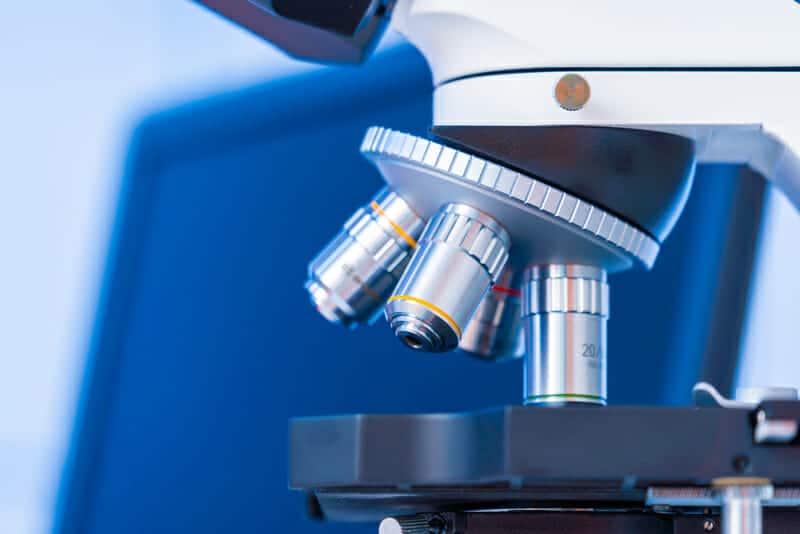
Humanin is still being heavily researched and its use as a therapeutic tool in human beings has not been thoroughly investigated.
But despite its newcomer status to the peptides industry, there is still much to learn about its full capabilities.
This comprehensive blog post discusses additional information about Humanin not mentioned here: Naturally elevating your body’s production of Humanin, using Humanin for anxiety relief and sunburn protection, and much more.
Several YouTube videos (here, here, and here) discuss the powerful life-enhancing potential of Humanin and other mitochondrial-derived peptides.
“Age Later” is a book written by one of the pioneers in research surrounding mitochondrial-derived peptides such as Humanin (not to mention he’s also leading the TAME [Targeting/Taming Aging with Metformin] study!)
And as always…
Raise Your Vibration To Optimize Your Love Creation!
PS – When you’re ready to learn how to use peptides at a much deeper level, you have two options.
- You can set up a private One on One Call with me.
- Joining The Fully Optimized Health Mastermind with two Monthly 60 Minute Group Coaching Calls with Me and Daniel Kelly Discussing Fully Optimized Living including Peptides, Hormones, Gray Market Agents, Performance Enhancement and much more.

